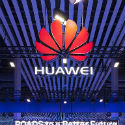Huawei's inventory buildup may have peaked
NeoPhotonics expects revenues from Huawei to decline from 50% of its total to much lower levels, a development the company said indicates that the Chinese vendor has met its inventory stockpile goal.

It's been widely reported that Huawei is stashing extra US-supplied equipment and components in case it can't get such kit if President Trump applies a comprehensive and substantial ban against doing business with the Chinese vendor.
But, according to at least one Huawei supplier, that inventory buildup is now finished.
"Over the last year we have reported that our largest customer, Huawei, has had a plan to build strategic inventory due to trade tensions. We believe at this point that they have achieved their goal," said NeoPhotonics CEO Tim Jenks during his company's quarterly conference call with analysts this week, according to a Seeking Alpha transcript of the event.
And this, according to some analysts, brings to an end immediate concerns that Huawei won't be able to supply its customers with necessary product orders.
"We think worries that Huawei could 'run out' of quality semiconductors may be overblown, and we expect the vendor will likely be around for the long-term, albeit at a lower global market share than it once enjoyed," wrote the Wall Street analysts at MKM Partners in a note issued to investors following the release of NeoPhotonics' quarterly earnings.
That said, at least according to NeoPhotonics, Huawei has no plans to dip into its reserves now. Instead, NeoPhotonics' Jenks said he expects the Chinese vendor to return to normal levels of component purchasing from NeoPhotonics.
"The trade tensions are putting Huawei in a somewhat unique position, and they have built up a strategic inventory, and we do expect that they will continue to be purchasing products that are based on their market demand and run rate, as opposed to working down their strategic inventory," he explained.
Such comments are noteworthy considering the Nikkei Asian Review reported in May that Huawei had stockpiled up to two years' worth of key American chips from the likes of Intel and Xilinx. Citing unnamed sources, the publication reported that Huawei started buying up chips at the end of 2018 after the arrest of Huawei CFO Meng Wanzhou.
Further, Taiwan Semiconductor Manufacturing Co. – a major international chipset supplier – has stopped accepting new orders from Huawei in response to US moves against the Chinese company, according to the Nikkei Asian Review.
But Huawei executives have sought to reassure at least some customers that the company is in no danger of running out of spare parts. NeoPhotonics' comments would align with that view.
Importantly, San Jose, California-based NeoPhotonics said that it expects to continue to supply its optical networking components to Huawei, just not at the breakneck, save-it-for-later rate it was doing during Huawei's inventory buildup.
"We do expect to have a smaller revenue base from Huawei as a result, because over the last year, we have had a larger than normal Huawei percent of revenue as they were accumulating a strategic inventory," Jenks said. He estimated that Huawei has historically accounted for 30% to 40% of NeoPhotonics' revenue, but in the past year has been around 50%.
"Now, as we look out toward, beyond the quarter and next year, Huawei is in a situation where they may see, they may be subject to market share shifts," Jenks explained, hinting at the possibility that Huawei could face declines in some of its markets.
The MKM Partners analysts agreed. "This suggests Huawei should fall to 25% to 35% of sales [for NeoPhotonics] as it cedes some market share outside of China to other NeoPhotonics customers," they wrote. "We consider the 2Q20 earnings report to be a win for NeoPhotonics because the Huawei business looks like it should be more sustainable for longer than we feared."
NeoPhotonics, for its part, lists Huawei and Ciena as its largest customers, along with the likes of Cisco, Nokia and ZTE. The company said it believes it will supply its photonic integrated circuit-based coherent optical receivers, lasers and switches to the companies that replace Huawei around the world, thus maintaining its business. The company's products are used in the medium- and long-distance high-speed fiber networks – 400G, 600G and beyond – that form the backbone of the world's Internet network.
NeoPhotonics was one of a number of US companies put into a tailspin by the Trump administration's initial moves against Huawei in May 2019. Indeed, NeoPhotonics' stock showed a dramatic plunge on that news, but its shares have since recovered to prices higher than before Trump's Huawei ban.
Huawei, for its part, trumpeted huge increases in sales during the first half of 2020. But the company's longer term outlook could be on the downswing as it faces growing opposition from countries, including the UK, France, Brazil and elsewhere.
— Mike Dano, Editorial Director, 5G & Mobile Strategies, Light Reading | @mikeddano
Read more about:
AsiaAbout the Author(s)
You May Also Like




.jpg?width=300&auto=webp&quality=80&disable=upscale)







